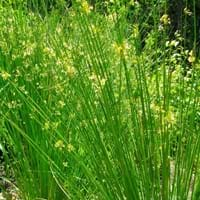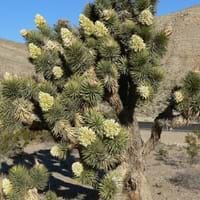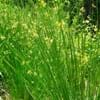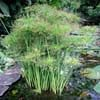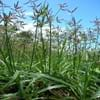Life Span
Perennial
Perennial
Type
Sedge or Rush
Cactus or Succulent, Tree
Origin
World/Pandemic, North America, Europe, Russia/Siberia, Africa, Asia
Southwestern United States, Mexico
Types
austrocalifornicus , effusus , laxus , pacificus , solutus
Not Available
Number of Varieties
Not Available
Habitat
All sorts of environments, Banks, ditches, marshes, Shores of rivers or lakes
Desert, Dry areas, Rocky areas, Sandy areas
USDA Hardiness Zone
6-9
6-10
Sunset Zone
H1, 1a, 1b, 2a, 2b, 3a, 3b, 4, 5, 6, 7, 8, 9, 10, 11, 12, 13, 14, 15, 16, 17, 18, 19, 20, 21, 22, 23, 24
9, 10, 11, 12, 13, 14, 15, 16, 18, 19, 20, 21, 22, 23
Habit
Clump-Forming
Upright/Erect
Flower Color
Brown
White, Ivory
Flower Color Modifier
Bicolor
Not Available
Fruit Color
Not Available
Light Green
Leaf Color in Spring
Green
Gray Green, Dark Green
Leaf Color in Summer
Green
Gray Green, Dark Green
Leaf Color in Fall
Green
Gray Green, Dark Green
Leaf Color in Winter
Green, Tan, Sandy Brown
Olive, Gray Green, Dark Green
Leaf Shape
Long hair-like leaves
Linear
Plant Season
Spring, Summer, Fall, Winter
Spring, Summer, Fall, Winter
Sunlight
Full Sun, Partial Sun
Full Sun
Growth Rate
Fast
Very Slow
Type of Soil
Clay, Loam, Sand
Loam, Sand
The pH of Soil
Acidic, Neutral
Acidic, Neutral, Alkaline
Soil Drainage
Poorly Drained
Well drained
Bloom Time
Early Summer, Summer, Late Summer, Early Fall
Early Spring, Spring, Late Winter
Tolerances
Drought
Drought
Where to Plant?
Ground
Ground
How to Plant?
Divison, reseeds
Leaf Cutting, Stem Cutting
Plant Maintenance
Medium
Medium
Watering Requirements
Does not require regular watering
Allow soil to be completely dry in between waterings, Do not water frequently
In Summer
Lots of watering
Lots of watering
In Spring
Moderate
Moderate
In Winter
Average Water
Average Water
Soil pH
Acidic, Neutral
Acidic, Neutral, Alkaline
Soil Type
Clay, Loam, Sand
Loam, Sand
Soil Drainage Capacity
Poorly Drained
Well drained
Sun Exposure
Full Sun, Partial Sun
Full Sun
Pruning
Prune to control growth, Remove damaged leaves, Remove dead branches, Remove dead leaves
Remove damaged leaves, Remove dead branches, Remove dead leaves
Fertilizers
All-Purpose Liquid Fertilizer
All-Purpose Liquid Fertilizer, No fertilizers needed
Pests and Diseases
Not Available
Brown Spots, Red blotch
Plant Tolerance
Drought
Drought, Dry Conditions, Dry soil, Heat Tolerance, Rocky Soil, Sun
Flowers
Insignificant
Showy
Flower Petal Number
Single
Single
Foliage Texture
Fine
Bold
Foliage Sheen
Glossy
Matte
Attracts
Bumblebees, Flying insects
Not Available
Allergy
Unknown
Not Available
Aesthetic Uses
Informal Hedge, Woodland margins
Decorating walls
Beauty Benefits
Not Available
Not Available
Environmental Uses
Air purification
Air purification
Medicinal Uses
Not Available
Not Available
Part of Plant Used
Not Available
Not Available
Other Uses
woven into the covering of tatami mats
Not Available
Used As Indoor Plant
No
No
Used As Outdoor Plant
Yes
Yes
Garden Design
Bog Garden, Container, Mixed Border, Water Gardens
Feature Plant, Rock Garden, Wall
Botanical Name
JUNCUS effusus
YUCCA brevifolia
Common Name
Soft Rush
yucca palm
tree yucca
palm tree yucca
In Hindi
Soft Rush
Joshua Tree
In German
Soft Rush
Joshua Tree
In French
Soft Rush
Joshua Tree
In Spanish
Soft Rush
Árbol de Joshua
In Greek
Soft Rush
Joshua Tree
In Portuguese
Soft Rush
Joshua Tree
In Polish
Soft Rush
Joshua Tree
In Latin
Soft Rush
Joshua ligno
Phylum
Magnoliophyta
Tracheophyta
Class
Liliopsida
Magnoliopsida
Family
Juncaceae
Agavaceae
Clade
Angiosperms, Commelinids, Monocots
Angiosperms, Monocots
Tribe
Not Available
Not Available
Subfamily
Not Available
Not Available
Number of Species
Not Available
Season and Care of Common Rush and Joshua Tree
Season and care of Common Rush and Joshua Tree is important to know. While considering everything about Common Rush and Joshua Tree Care, growing season is an essential factor. Common Rush season is Spring, Summer, Fall and Winter and Joshua Tree season is Spring, Summer, Fall and Winter. The type of soil for Common Rush is Clay, Loam, Sand and for Joshua Tree is Loam, Sand while the PH of soil for Common Rush is Acidic, Neutral and for Joshua Tree is Acidic, Neutral, Alkaline.
Common Rush and Joshua Tree Physical Information
Common Rush and Joshua Tree physical information is very important for comparison. Common Rush height is 45.70 cm and width 61.00 cm whereas Joshua Tree height is 610.00 cm and width 300.00 cm. The color specification of Common Rush and Joshua Tree are as follows:
Common Rush flower color: Brown
Common Rush leaf color: Green
Joshua Tree flower color: White and Ivory
- Joshua Tree leaf color: Gray Green and Dark Green
Care of Common Rush and Joshua Tree
Care of Common Rush and Joshua Tree include pruning, fertilizers, watering etc. Common Rush pruning is done Prune to control growth, Remove damaged leaves, Remove dead branches and Remove dead leaves and Joshua Tree pruning is done Remove damaged leaves, Remove dead branches and Remove dead leaves. In summer Common Rush needs Lots of watering and in winter, it needs Average Water. Whereas, in summer Joshua Tree needs Lots of watering and in winter, it needs Average Water.
